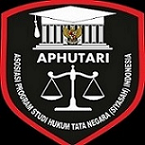Living Qur’an: Pembacaan Surat Al-Waqi’ah dan Al-Mulk
Abstract
The application of reading the letters of al-Waqi'ah and al-Mulk at the Al Ansor Manunggang Julu Islamic Boarding School, Southeast Padangsidimpuan District, Padangsidimpuan City. The practice of applying Sutar recitation is one of the social responses of a particular community or group of people in perceiving the presence of the Qur'an. This study discusses the practice and meaning of the application of reading al-Waqi'ah and al-Mulk letters at the al-Ansor Manunggang Julu Islamic Boarding School, Kec. Padangsidimpuan Southeast Padangsidimpuan City. The aim is to find out the practice and meaning of the application of reading al-Waqi'ah and al-Mulk letters at the al-Ansor Manunggang Julu Islamic Boarding School, Kec. Padangsidimpuan Southeast Padangsidimpuan City. In this paper, the writer uses a qualitative descriptive method with data collection techniques that the author does, namely observation, interviews and documentation. Then take books related to this research, such as the book of theresearch methodology Living Qur'an and Hadithby Sahiron Syamsudin. The results of the study, it can be seen that the application of reading letters al Waqi'ah and al-Mulk is the idea of the female student organization management that has lasted for 7 years and it is required for all female students to take part in the reading of Surat al-Waqi'ah which is carried out after the Fajr prayer and Surah al-Mulk is carried out after the Isha prayer. Initially the students felt compelled to do it, as time went on there were certain benefits that were obtained such as peace of mind, comfort, ease in dealing with problems that came, increasing parental submissions, not feeling deprived, and being able to control emotions.
Keywords
Full Text:
PDFReferences
Referensi
a. Sumber Buku
Ahsin W. Al-Hafidz. Kamus Ilmu Al-Qur’an. Jakarta: Amzah, 2012.
Departemen Agama Republik Indonesia. Al-Qur’an dan Terjemahnya Juz 1- Juz 30. Jakarta: Jaya Sakti Surabaya,1989.
Ibrahim Eldeeb. Be a Living Qur’an Petunjuk Praktis Penerapan Ayat-ayat Al-Qur’an dalam Kehidupan Sehari-hari. Tangerang: Lentera Hati, 2005.
Mahammad Makhdhali. Bacalah Surat Al-Waqi’ah Maka Engkau akan Kaya. Yogyakarta: Diva Press, 2011.
Muhammad Mansur. “Living Qur’an dalam Lintasan Sejarah Studi Qur’an”, dalam Metodologi Penelitian Living Qur’an dan Hadis. Yogyakarta: TH-Press, 2007.
Muhammad Yusuf. "Pendekatan Sosiologi dalam Penelitian Living Qur’an”, dalam Metodologi Penelitian Living Qur’an dan Hadis. Yogyakarta: TH-Press, 2007.
b. Sumber Jurnal
Ali Sati, “Ke-Hujjah-an Hadis Dhaif di Kalangan Ahli,” Yurisprudentia: Jurnal Hukum Ekonomi, Vol. 4, No. 2 (2018): 132.
Daliati Simanjuntak, “Etika Berbaasa Persfektif Al-Qur’an,” Yurisprudentia: Jurnal Hukum Ekomoni, Vol.3, No. 2 (2017): 56.
Daliati Simanjuntak, “Munasabat Al-Qur’an Menurut Al-Biqa’i,” El-Qanuny: Jurnal ilmu-ilmu Kesyariahan dan Pranata Sosial, Vol. 4, No. 2 (2018): 1.
Muhammad Arsad Nasution, “Radikalisme atau tasamuh: Analisis Terhadap Ayat- Ayat Al-Qur’an Tentang Ahli Kitab,” Al-Maqasid: Jurnal Ilmu Kesyariahan dan Keperdataan, Vol. 5, No.2 (2019): 172.
Sawaluddin Siregar, “Wasilah Ibadah Agung yang Banyak Terselewengkan,” Yurisprudentia: Jurnal Hukum Ekonomi, Vol. 3, No. 1 (2017): 124.
Sumper Mulia Harahap, “Mukjizat Al-Qur’an,” Al-Maqasid: Jurnal Ilmu Kesyariahan dan Keperdataan, Vol. 4, No. 2 (2018): 15.
Syafri Gunawan, “Historis Kajian Hak Azasi Manusia di dalam Hukum Islam,” El- Qanuny: Jurnal ilmu-ilmu Kesyariahan dan Pranata Sosial, Vol. 6, No. 2 (2020): 172.
Ummi Kalsum Hasibuan, “Keadilan dalam Al-Qur'an (Interpretasi Ma'na Cum Maghza Terhadap Q.S. Al-Hujarat [49] ayat 9),” Al Fawatih: Jurnal Kajian dan Hadis, Vol. 1, No. 2 (2020): 63.
Zulhammi, “Upaya Orang Tua Mendidik Anak Mencintai Al-Qur’an,” Al Fawatih: Jurnal Kajian dan Hadis, Vol. 1, No. 2 (2020): 109.
DOI: https://doi.org/10.24952/el-thawalib.v2i4.4237
Refbacks
- There are currently no refbacks.









Editorial Office Board :
Kampus UIN Syekh Ali Hasan Ahmad Addary Padangsidimpuan
Jl. T Rizal Nurdin No.Km 4, RW.5, Sihitang, Padangsidimpuan Tenggara, Kota Padang Sidempuan, Sumatera Utara 22733
 Jurnal El-Thawalib is licensed under a Creative Commons Attribution-ShareAlike 4.0 International License.
Jurnal El-Thawalib is licensed under a Creative Commons Attribution-ShareAlike 4.0 International License.
View My Stats






